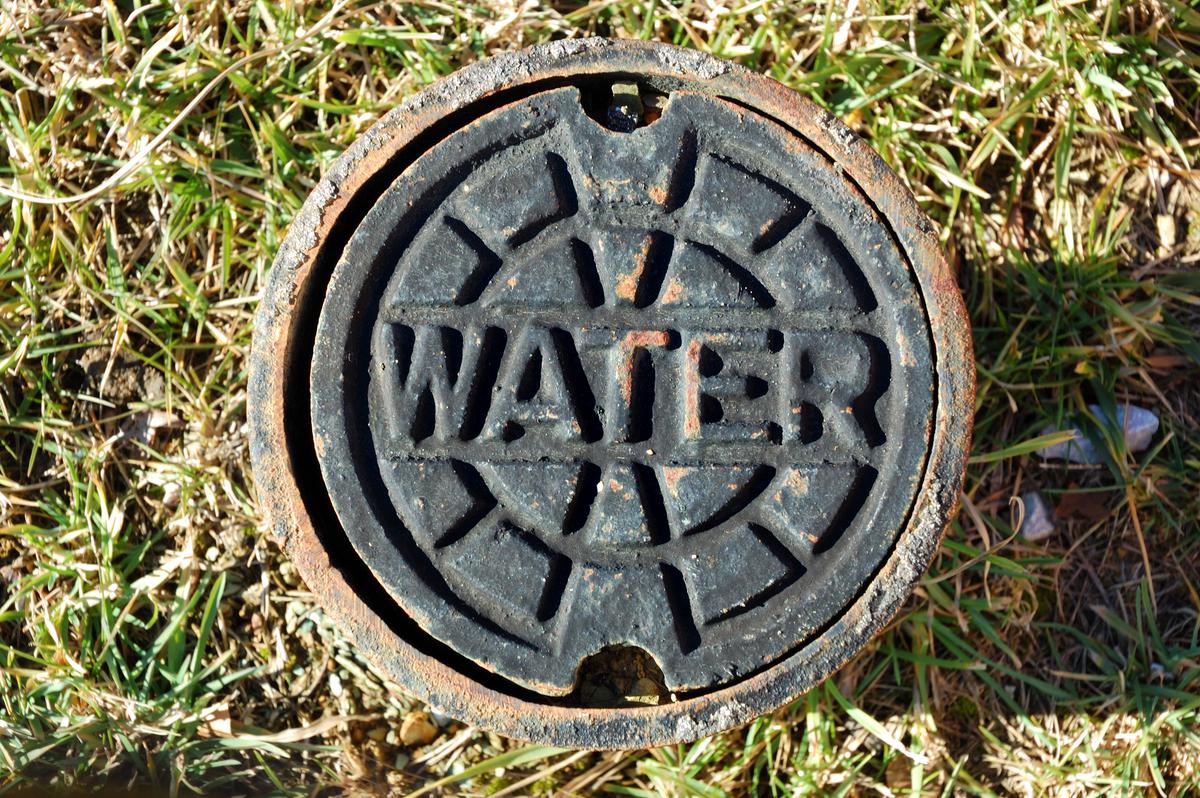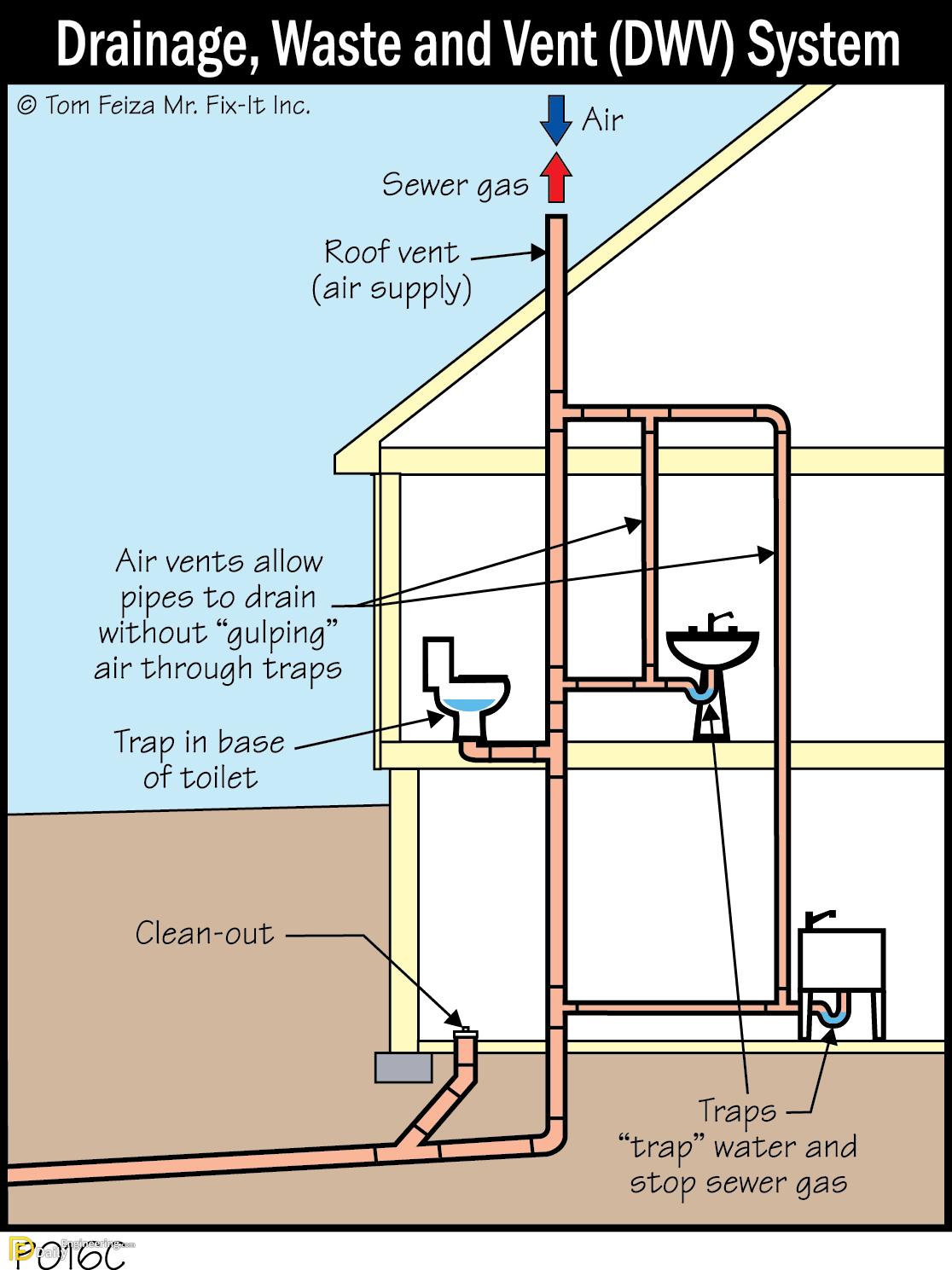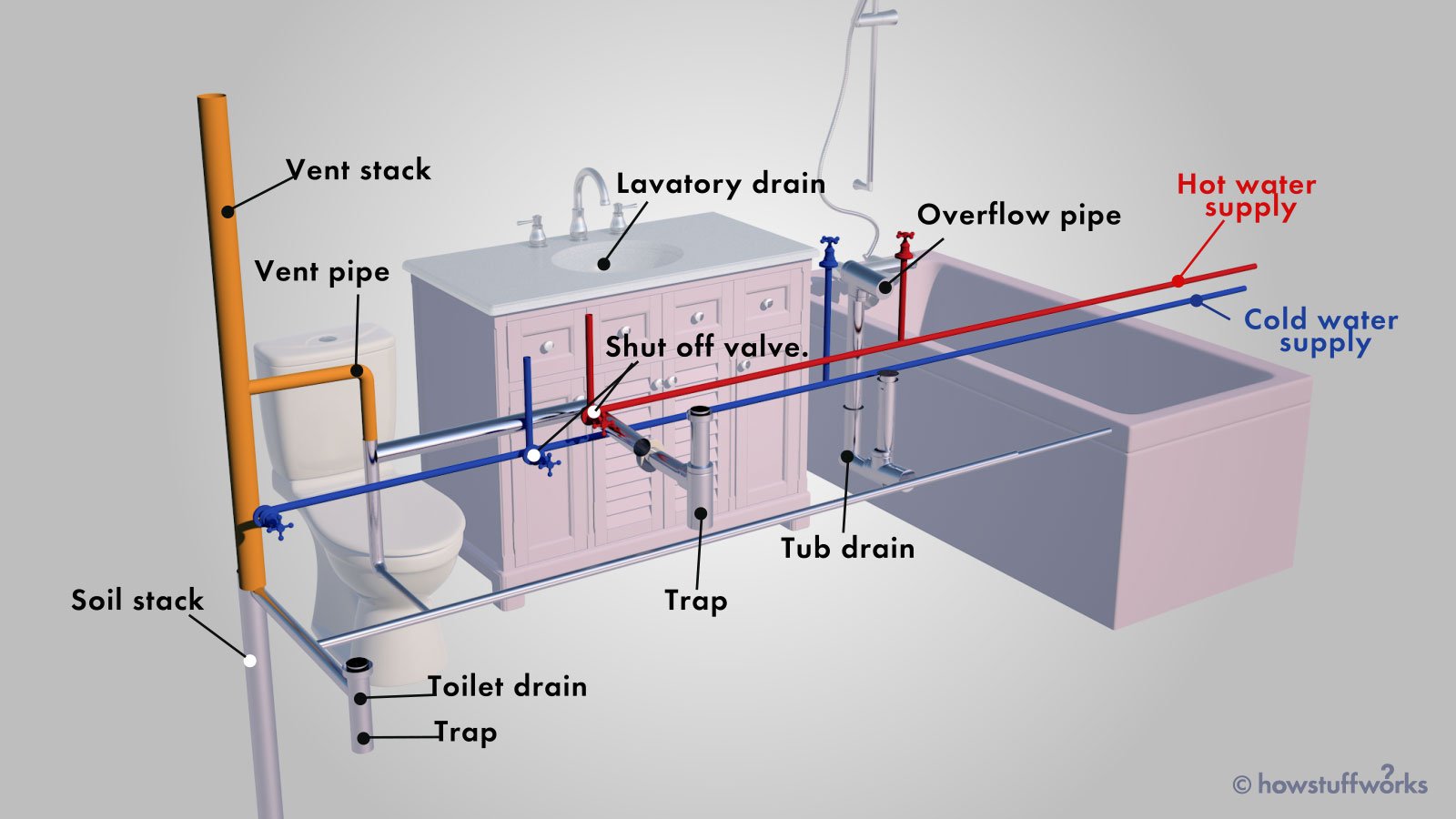Check the vent pipe for blockages
A common cause of kitchen sink vent issues is blockages in the vent pipe. Over time, debris and sediment can build up in the pipe, restricting the flow of air. This can lead to negative pressure in the plumbing system and cause gurgling noises, slow drainage, and even sewer smells in your kitchen.
To troubleshoot this issue, start by locating the vent pipe, which is usually found on the roof of your house. Use a flashlight to shine down the pipe and look for any blockages or buildup. If you spot any, use a plumbing snake to clear out the obstruction. Once the pipe is clear, run water down the drain to see if the issue has been resolved.
Inspect the vent pipe for damage
Another potential cause of kitchen sink vent problems is damage to the vent pipe. This can occur due to extreme weather conditions, animal activity, or general wear and tear over time. Inspect the vent pipe for any cracks, holes, or other signs of damage. If you notice any, repair or replace the damaged section of the pipe to restore proper ventilation to your plumbing system.
Ensure the vent pipe is properly connected
It's also important to check that the vent pipe is properly connected to the kitchen sink drain and the main vent stack. A loose or disconnected pipe can cause air to escape, disrupting the proper functioning of the plumbing system. Tighten any loose connections or reattach the pipe if necessary.
Check the vent pipe for obstructions
In some cases, the issue may not be with the vent pipe itself, but with the vent cap. Check the vent cap for any obstructions such as bird nests or debris. If necessary, remove and clean the cap to ensure proper airflow.
Clean the vent pipe with a plumbing snake
If you've ruled out blockages and obstructions in the vent pipe, but are still experiencing issues with your kitchen sink vent, it may be time for a more thorough cleaning. Use a plumbing snake to clean the inside of the vent pipe, removing any built-up debris or sediment.
Check the vent pipe for leaks
A leak in the vent pipe can also cause problems with your kitchen sink vent. Inspect the pipe for any signs of leaks, such as water stains or wet spots. If you find a leak, repair or replace the affected section of the pipe to prevent further issues.
Make sure the vent pipe is the correct size
The size of the vent pipe is also important for proper ventilation. If the pipe is too small, it may not be able to handle the airflow needed for the plumbing system. Check that the vent pipe is the correct size for your kitchen sink and make any necessary adjustments.
Check the vent pipe for cracks or holes
In addition to damage from external factors, the vent pipe can also develop cracks or holes over time. Inspect the pipe for any signs of damage and repair or replace the damaged section as needed to restore proper ventilation.
Install a vent cap on the vent pipe
If your kitchen sink vent does not have a vent cap, it may be susceptible to issues such as blockages or animal activity. Install a vent cap on the end of the vent pipe to prevent these issues and ensure proper ventilation.
Check the vent pipe for proper slope and angle
The vent pipe needs to have the correct slope and angle for proper functioning. Check that the pipe is sloping downwards at a slight angle to allow for proper airflow. If it is not, make any necessary adjustments to ensure proper slope and angle.
In conclusion, troubleshooting kitchen sink vent issues may require some detective work, but with these 10 tips and a little bit of elbow grease, you can successfully diagnose and fix any problems with your vent pipe. Remember to regularly maintain and clean your vent pipe to prevent issues in the future. If you are still experiencing problems, it may be time to call in a professional plumber for assistance.
Why Proper Kitchen Sink Ventilation is Important for Your House Design

Understanding the Purpose of a Kitchen Sink Vent
 One of the most important elements in any kitchen is the sink. It is where we wash our dishes, prepare our food, and sometimes even do our laundry. With all these activities happening in one area, it's crucial to have proper ventilation in your kitchen sink to maintain a healthy and functional environment. A kitchen sink vent is a vital component of your plumbing system that helps remove unwanted odors, gases, and moisture from your kitchen. Without it, your kitchen could quickly become a breeding ground for bacteria and mold, leading to potential health hazards and unpleasant smells. In this article, we will discuss the importance of having a well-functioning kitchen sink vent and how to troubleshoot any potential issues that may arise.
One of the most important elements in any kitchen is the sink. It is where we wash our dishes, prepare our food, and sometimes even do our laundry. With all these activities happening in one area, it's crucial to have proper ventilation in your kitchen sink to maintain a healthy and functional environment. A kitchen sink vent is a vital component of your plumbing system that helps remove unwanted odors, gases, and moisture from your kitchen. Without it, your kitchen could quickly become a breeding ground for bacteria and mold, leading to potential health hazards and unpleasant smells. In this article, we will discuss the importance of having a well-functioning kitchen sink vent and how to troubleshoot any potential issues that may arise.
The Consequences of a Faulty Kitchen Sink Vent
 A malfunctioning kitchen sink vent can cause a range of problems in your home. The most obvious issue is the unpleasant odors that can linger in your kitchen. These odors can come from rotting food particles, bacteria, and other debris that get trapped in your sink's drain. Not only can this be a nuisance, but it can also create an unhealthy environment. The moisture from your sink can also contribute to the growth of mold, which can be harmful to your health and cause damage to your home's structure. Additionally, a clogged or faulty kitchen sink vent can also affect the overall functionality of your plumbing system, causing backups and slow draining.
A malfunctioning kitchen sink vent can cause a range of problems in your home. The most obvious issue is the unpleasant odors that can linger in your kitchen. These odors can come from rotting food particles, bacteria, and other debris that get trapped in your sink's drain. Not only can this be a nuisance, but it can also create an unhealthy environment. The moisture from your sink can also contribute to the growth of mold, which can be harmful to your health and cause damage to your home's structure. Additionally, a clogged or faulty kitchen sink vent can also affect the overall functionality of your plumbing system, causing backups and slow draining.
Troubleshooting Common Kitchen Sink Vent Issues
 If you are experiencing any issues with your kitchen sink vent, it's essential to address them promptly to avoid further complications. One common problem is a clogged vent. This can happen due to debris, such as food particles and grease, getting stuck in the vent pipe. To troubleshoot this issue, you can try using a plunger or a plumbing snake to remove the blockage. Another common issue is a faulty vent pipe, which can be caused by cracks or breaks in the pipe. In this case, it's best to consult a professional plumber to repair or replace the damaged pipe.
If you are experiencing any issues with your kitchen sink vent, it's essential to address them promptly to avoid further complications. One common problem is a clogged vent. This can happen due to debris, such as food particles and grease, getting stuck in the vent pipe. To troubleshoot this issue, you can try using a plunger or a plumbing snake to remove the blockage. Another common issue is a faulty vent pipe, which can be caused by cracks or breaks in the pipe. In this case, it's best to consult a professional plumber to repair or replace the damaged pipe.
The Importance of Proper Installation
 To ensure your kitchen sink vent functions properly, it's crucial to have it installed correctly. A vent pipe that is too small or too long can cause issues with proper airflow and ventilation. It's also important to have the vent pipe installed at the correct angle to promote proper drainage. If you're experiencing problems with your kitchen sink vent, it's possible that it was not installed correctly, and you may need to have it reinstalled by a professional plumber.
In conclusion, proper kitchen sink ventilation is a crucial component of any house design. It not only helps to maintain a healthy and functional environment but also prevents potential plumbing issues. If you're experiencing any problems with your kitchen sink vent, it's essential to address them promptly to avoid further complications. By understanding the purpose of a kitchen sink vent and troubleshooting common issues, you can ensure your kitchen remains a clean and enjoyable space for all your household activities.
To ensure your kitchen sink vent functions properly, it's crucial to have it installed correctly. A vent pipe that is too small or too long can cause issues with proper airflow and ventilation. It's also important to have the vent pipe installed at the correct angle to promote proper drainage. If you're experiencing problems with your kitchen sink vent, it's possible that it was not installed correctly, and you may need to have it reinstalled by a professional plumber.
In conclusion, proper kitchen sink ventilation is a crucial component of any house design. It not only helps to maintain a healthy and functional environment but also prevents potential plumbing issues. If you're experiencing any problems with your kitchen sink vent, it's essential to address them promptly to avoid further complications. By understanding the purpose of a kitchen sink vent and troubleshooting common issues, you can ensure your kitchen remains a clean and enjoyable space for all your household activities.














.JPG)
















































































:max_bytes(150000):strip_icc()/_hero_4109254-feathertop-5c7d415346e0fb0001a5f085.jpg)
